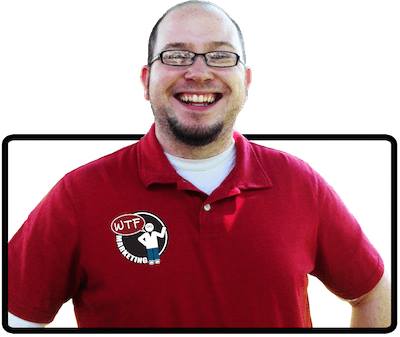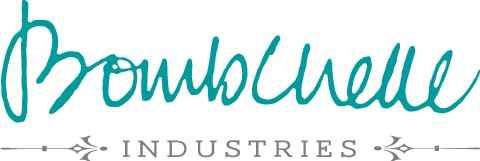What separates productive people from business owners that are constantly stressed? This post is part of weekly feature, Workflow Wednesdays, that aims to find out, with a weekly post going in-depth on a specific part of a business owner’s workflow and what they do that makes it rock. Interested in being featured in a post? Sign up here!
This week, we have Nick Armstrong, founder of WTF Marketing and creator of my favorite business PSAs, with some tips on creating great testimonials (and doing better business in the process). Take it away, Nick!
There’s nothing better than doing good work for a great client – except maybe mind-blowing sex.
When you know what they want, how they want it, and wrap it all up in a nice package when you deliver, you deserve – at the least – a high five, if not a standing ovation.
But what happens when that great client shrugs off all your effort? What a huge rejection, especially if you did everything right. Doubly-so if they think you did everything right. That’s an awful feeling.
If you’re finding that your clients shrug off good service, good work, and good delivery – it might not be you (at least, not your work). It might be your process. Even great sex can become mediocre sex if you just sigh and roll over afterward.
“Great, I came, so did you – what, do you want a cookie?”
Sex shouldn’t be some sort of half-assed commodity transaction. And neither should your business.
What’s missing? My bet would be emotional resonance.
What if I told you that emotional resonance would give you a standing-ovation level testimonial almost every time you worked with a new client?
There’s a trick to it – it’s nothing crazy or complicated. It doesn’t rely on bribery, charisma, slickness, questionable behavior, or shady contract terms. It’s not about changing up your work, undercutting yourself, or working yourself to death, either. I’m going to make the assumption that your work is solid and your dance steps are smooth.
Are you ready?
All you need to do is ask two questions at the start of the project:
- What’s the problem you’re hoping I can help you with?
- How does the problem make you feel?
That’s it.
Two questions, asked at the start of your contract, will give you the perfect groundwork to get a solid testimonial once you’ve wrapped up your work.
Step One: Define Winning
The first question addresses something crucial to your success – how the client defines the problem, in their own words.
It’s not enough to “build a website” or to “design a logo” or “write product sales copy” – especially if the client is wanting to build a community, develop a cohesive brand, or cultivate uncontrollable Apple-like desire for a new product segment.
The work between each of those things might be the same, right? But the wording, the subtlety, the attention to detail is there – just like the huge difference between getting laid and making love.
The client’s definition of success is critical to your ability to deliver it.
If your client wants to just get laid, by all means – deliver that level of service. But if your client is seeking something more, nuance becomes important. Unrealistic expectations can also be laid to rest at this stage if you’re paying attention.
You have to understand how your client defines success before you can help them get there. Hints as to why they hired you and not your competition are also hidden in their wording. If you have a marketing problem, this is a good place to find out.
It can seem kind of cheesy, especially after you’ve had your initial meetings, or maybe after your contract has been signed, to ask these questions.
Don’t get all tied up about it, though – you’re not asking from a place of uncertainty, inexperience, or doubt. You’re asking because you’re confident in your competence to deliver exactly what they want, exactly how they want it, in-scope, on-budget, and on-time. Ultimately those two questions can save you a whole lot of pain and wasted work – a little bit of discomfort as you remember your confidence is well worth it, especially compared to the financial pain of a full refund.
You can also identify whether or not your solution will legitimately address the problem as the client understands it. If not, you’re at risk of a disappointed client (or worse).
Once you know the client’s definition of success, you can create what Chip and Dan Heath call a “destination postcard” – or a vivid description of what done looks like from their perspective through the lens of your experience. Being able to define done, in a way your client understands, agrees with, and feels good about is the most powerful sales skill you can learn in your own business.
A destination postcard also lets you work backwards from done to define the steps needed to get there, ultimately giving you the ability to give the client a roadmap for success.
OK, so – maybe I’m going a little crazy about the power of just one question, right? Especially if your systems are solid enough that you know exactly what steps to take each time you take on a new client. On the off chance your systems aren’t that solidified yet, you can build the bones with this method.
Step Two: Find the Emotion
The next question is: how does the problem make you feel?
You want the client to assign an emotion to the problem and its complications. The reason is – when work is just a money-for-commodity transaction, neither side puts much effort into it. And you, my friend, are not a commodity.
Which would you rather be: a brand new, game-changing iPad or shampoo? Sure, both confer some benefit… but while I’d probably not notice if the shampoo fell out of my cart, I want my hands all over that iPad the second I’m out of the store.
Asking about feelings also gives you almost superhuman insight into your big-picture value. It’s a hell of a cool thing to say, know, and believe: I make people less frustrated, less humiliated, less angry.
If your client is beyond frustrated at the symptoms of their problem, but solving the problem won’t alleviate the symptoms right away, you’re heading down the path to issuing a refund. Especially if the client’s understanding is that your solution will not only solve the original problem, but alleviate the symptoms right away.
If your client doesn’t understand what you do, how you do it, or how you operate, you’ll be facing down a “hey, that’s the wrong hole” situation soon enough. This is doubly-true if you don’t understand what your client does, how they do it, or how they operate, too. Missteps are easily forgiven as long as you and your client believe each other to be operating with honest intent – and that only comes from trust, which is developed by understanding and caring about the emotions driving your acts.
If one party is greedy, the other party is going to feel used. If one party feels the work is sacred, but the other thinks it’s run-of-the-mill, there’s a huge gap in expectations and delivery that will need to be addressed. Preferably, when it’s cheap: up-front and not when the project is over and one party still thinks there’s a lot of work left to do.
Whoa. We got a little heady there.
Yeah, there’s a lot of theory, because cognitive dissonance (when what we believe comes in conflict with how we act or how others act toward us) is a heady topic – and that’s really what we’re combatting when we ask these two questions.
You want to get a testimonial every time? Remove the cognitive dissonance, ensure that you’ve got emotional resonance, make sure your work matters by delivering exactly what they need.
What do you do when they answer? Document their answers to those two questions thoroughly. Repeat it back to them, to make sure you heard correctly without adding your own spin.
“I think what I hear you saying is that you’re [emotion] about [the problem]. So what I think will alleviate that frustration is this: [destination postcard]. Does that sound like a good plan?”
Rinse and repeat until you either decide you’re ready to proceed or you discover you’re not a good fit for the client.
OK, so how does this lead to better testimonials?
As part of your wrap-up/off-boarding procedure, show your client their answers to the first two questions from when you started. Then, you ask the third and final question: “How do you feel about the solution?”
Did their emotional state change? Did they find a new problem to obsess over (that maybe you can help them with)? Was their problem something different than was defined? Was your solution not as promised? Were there complications? Is everything happily settling into a new normal?
When they’ve got these 3 questions answered, and – assuming you’ve done good work and made the client happy – you can ask them if you can use their answers as a testimonial for your service.
Why would that be an effective testimonial?
Let’s recap:
- Commoditization is what makes your clients drag their feet giving testimonials (even when you did great work).
- Emotional resonance occurs when you integrate your solution into resolving to the emotions caused by the problem.
- Emotional resonance is what makes an iPad sexier than shampoo (and what makes you more than a commodity).
- Being able to define not only the problem, but success using the client’s own words, makes it more likely that they’ll not only understand the problem and solution better, but that they’ll actually push back less on your solution, your process, and ultimately – your value.
- Money is never spent without an accompanying emotion.
- Future clients will see that: A) you work to understand the client’s problems and needs, B) you can solve the problem to the client’s satisfaction, and C) your client is articulating your value using real, genuine emotions rather than stark, cold, bullshit business jargon.
Three questions that will lead you to solid testimonials, every single time. Why aren’t you asking?
 Nick Armstrong of WTF Marketing increased Library-card-wielding households by 12% in his hometown, played a co-organizer role in building the first-ever Fort Collins Comic Con (which raised $15,000 for the Library), and loves to make marketing fun for small business owners. Get to know him over at WTFMarketing.com.
Nick Armstrong of WTF Marketing increased Library-card-wielding households by 12% in his hometown, played a co-organizer role in building the first-ever Fort Collins Comic Con (which raised $15,000 for the Library), and loves to make marketing fun for small business owners. Get to know him over at WTFMarketing.com.
